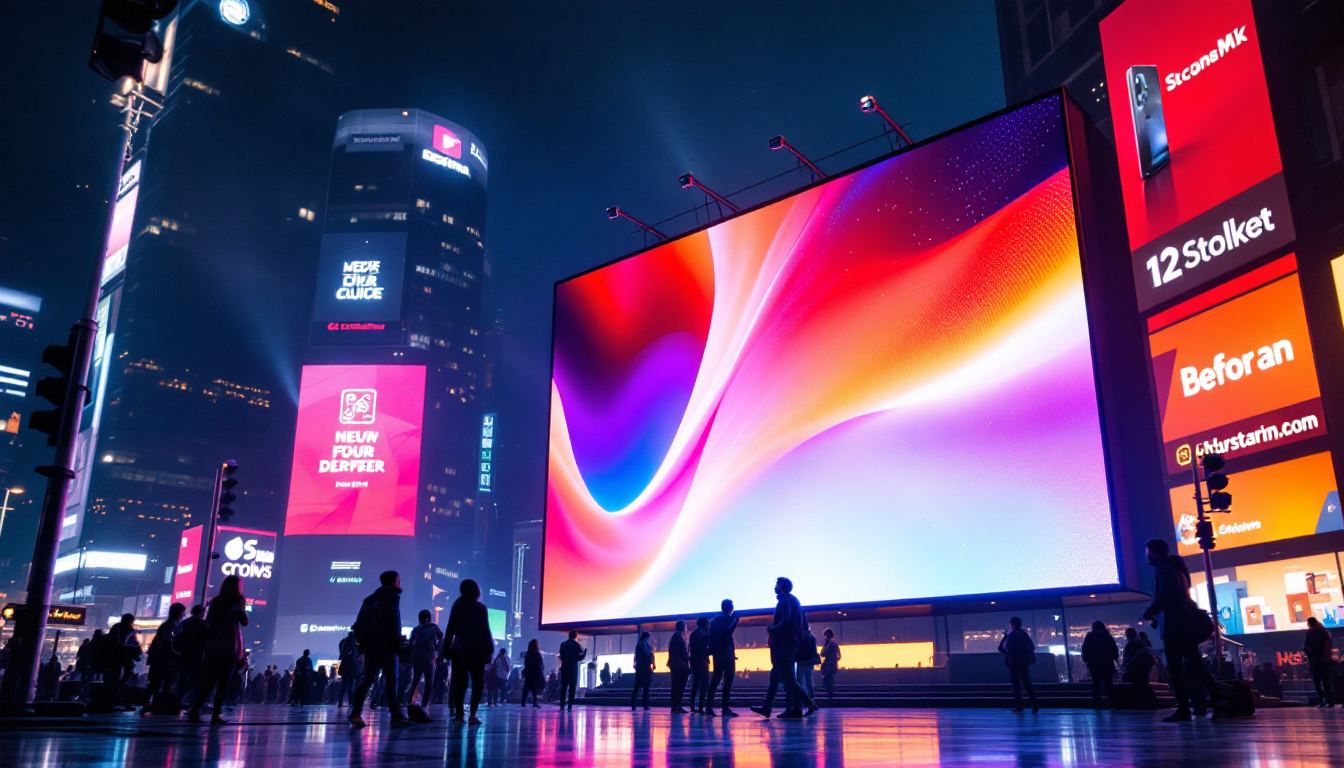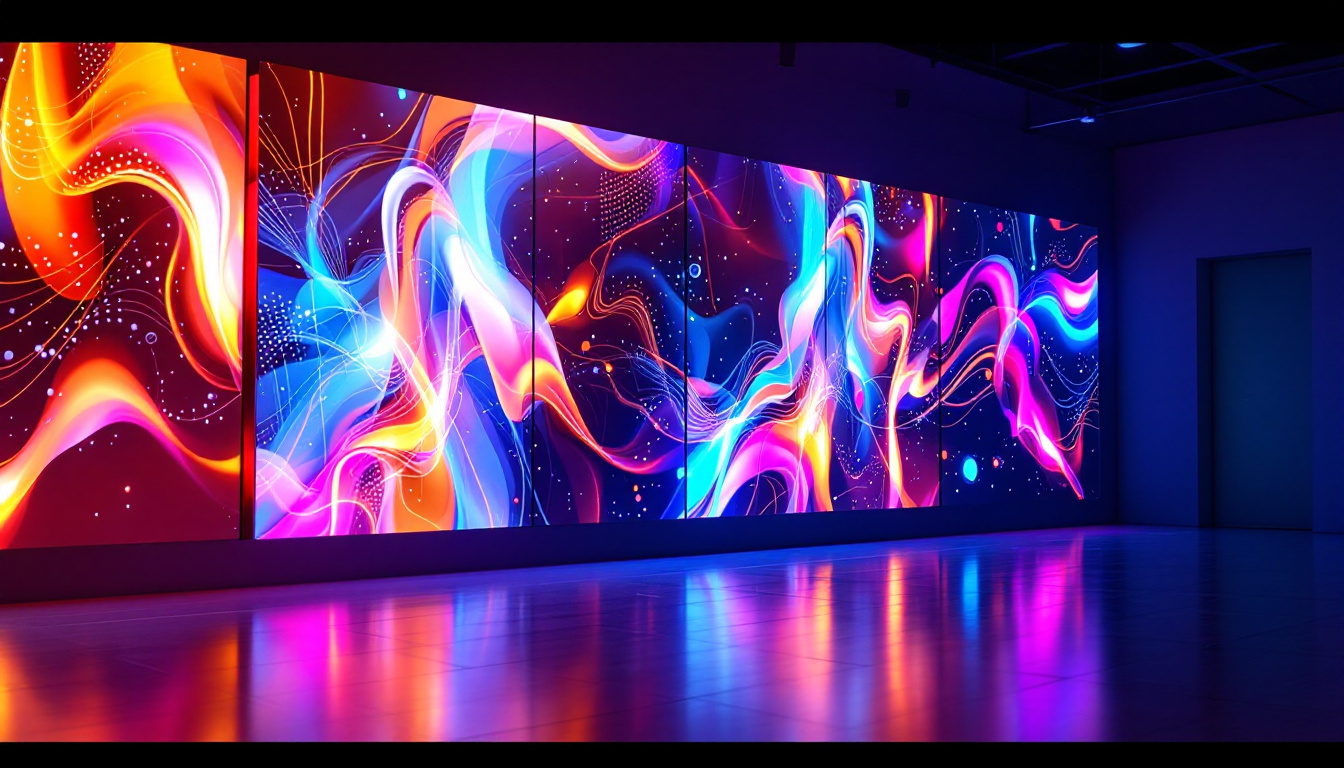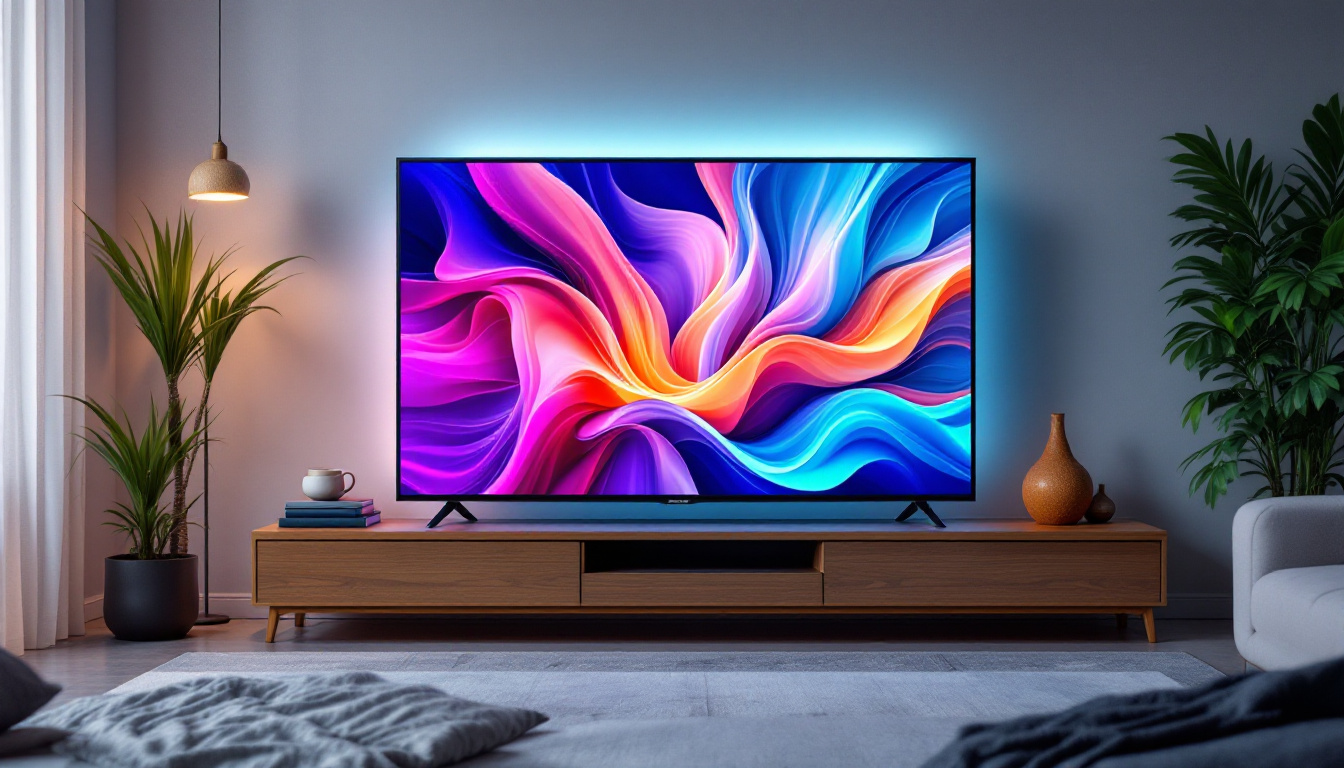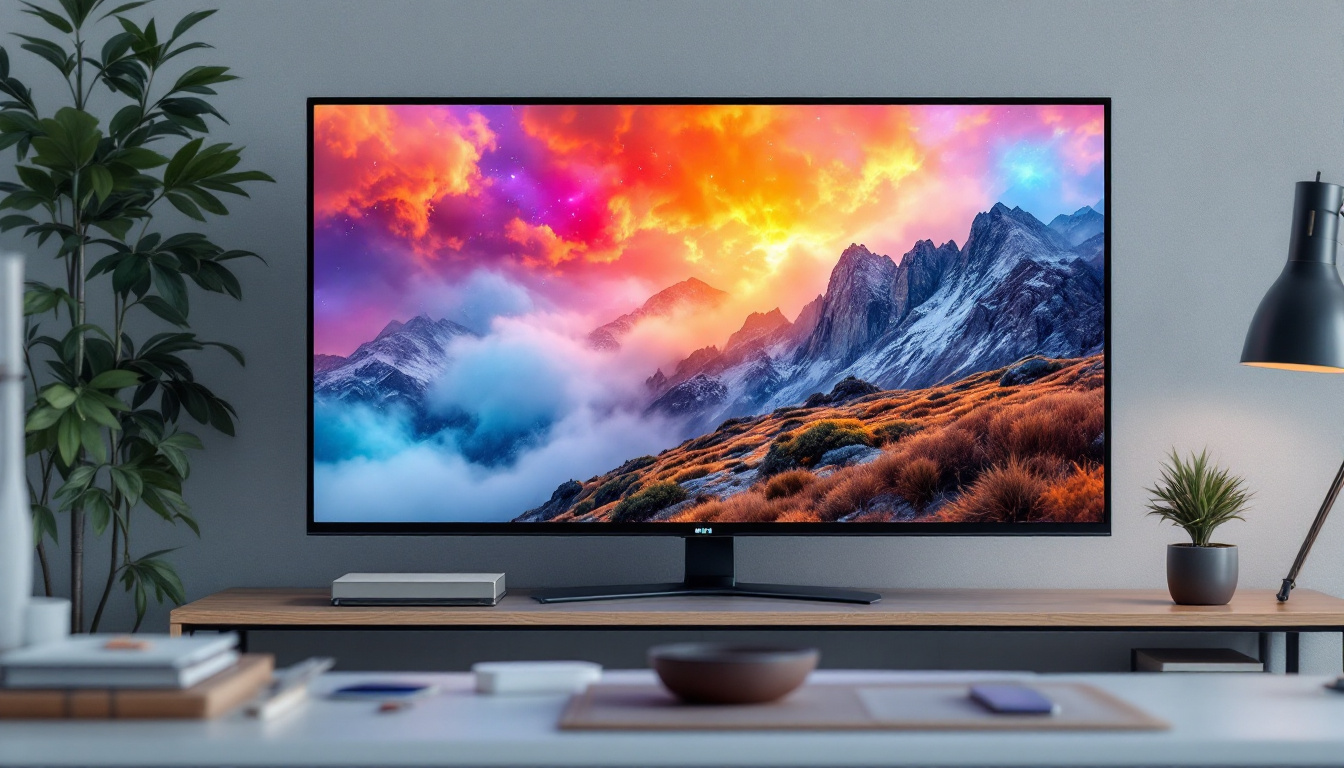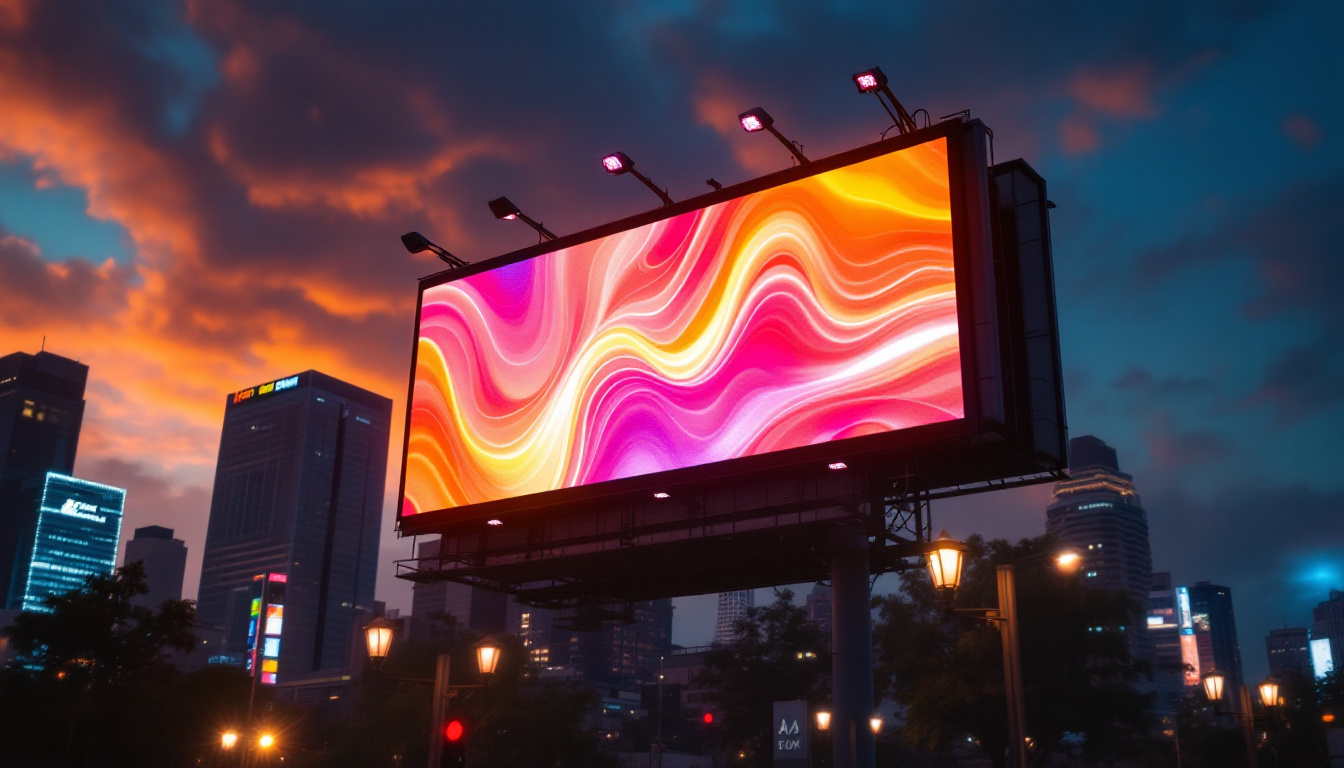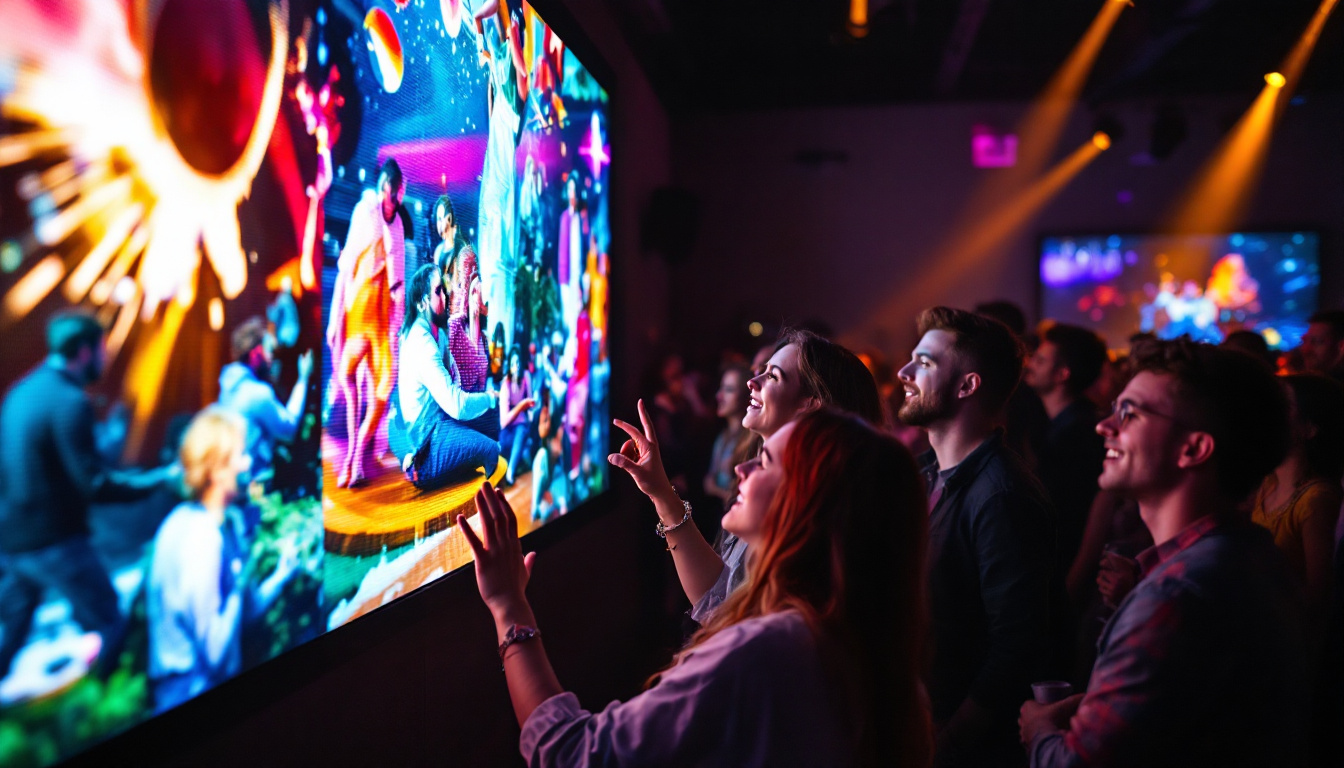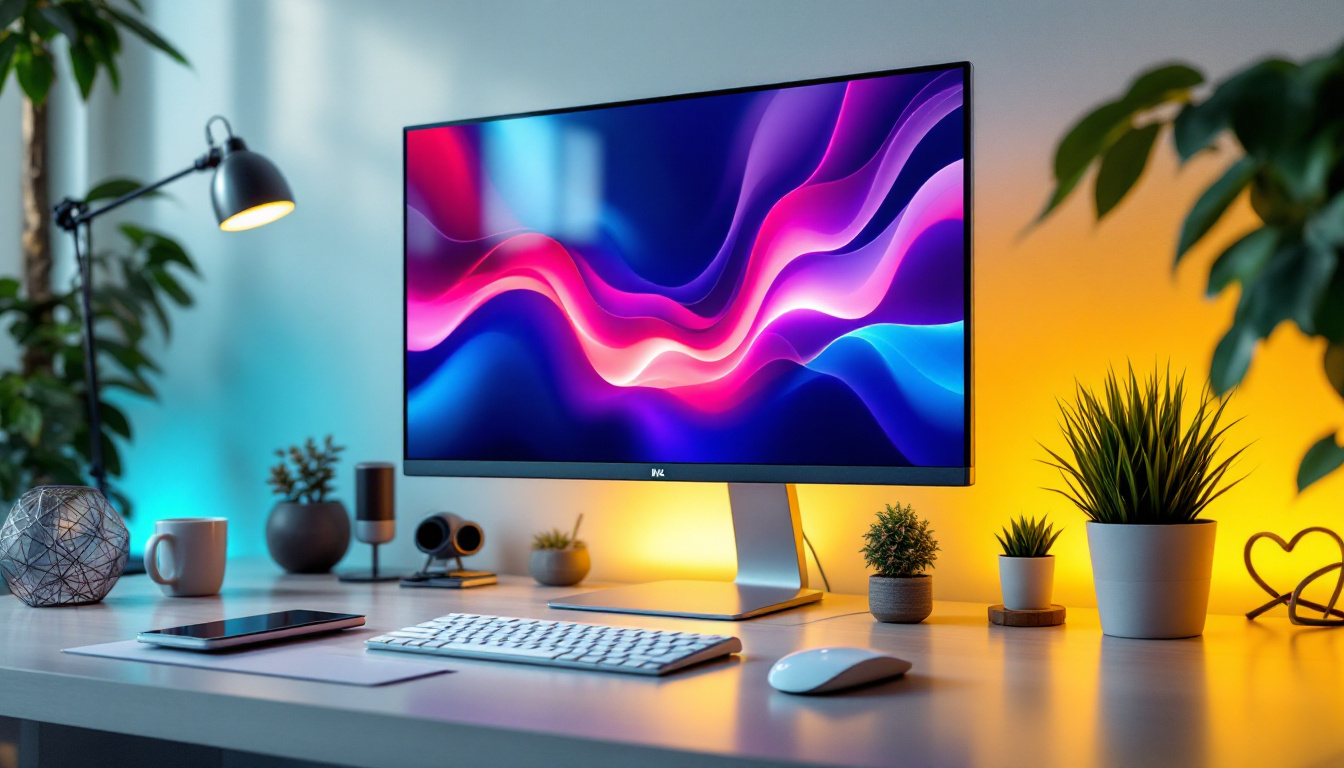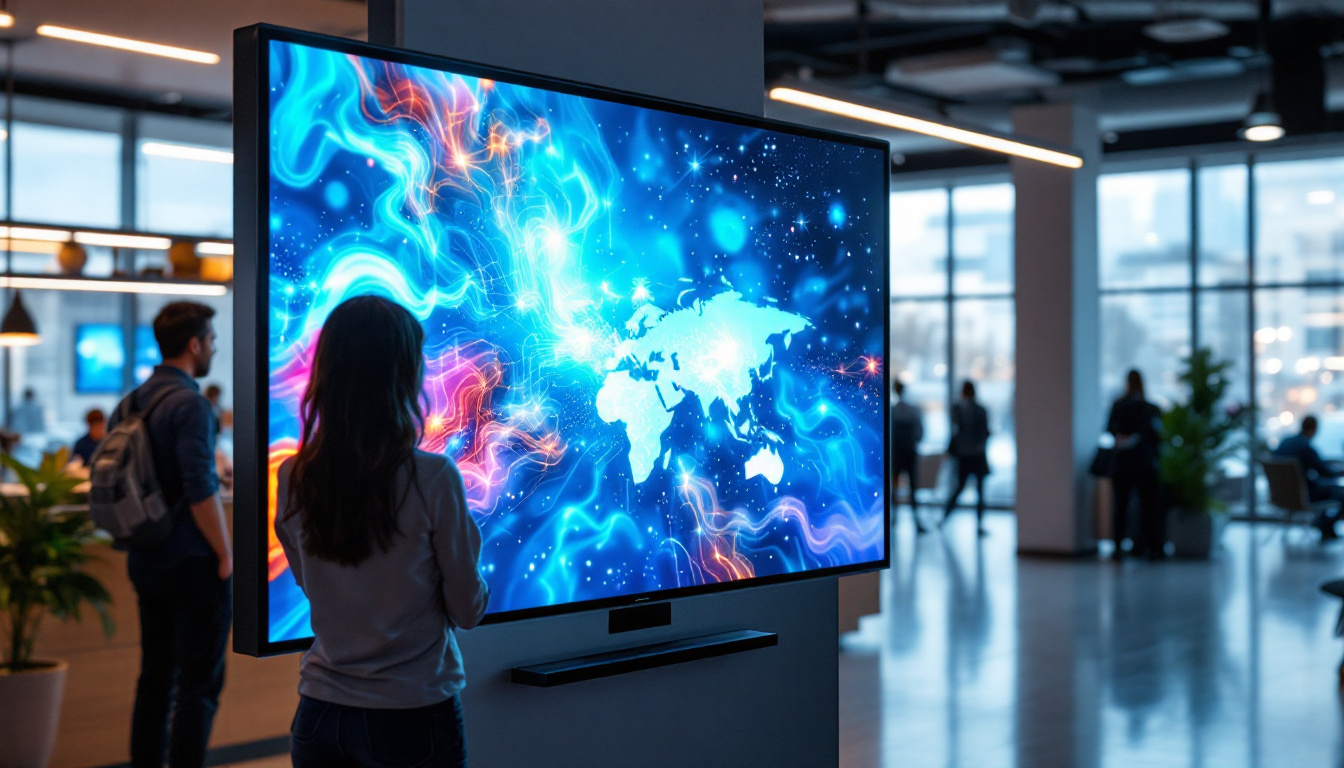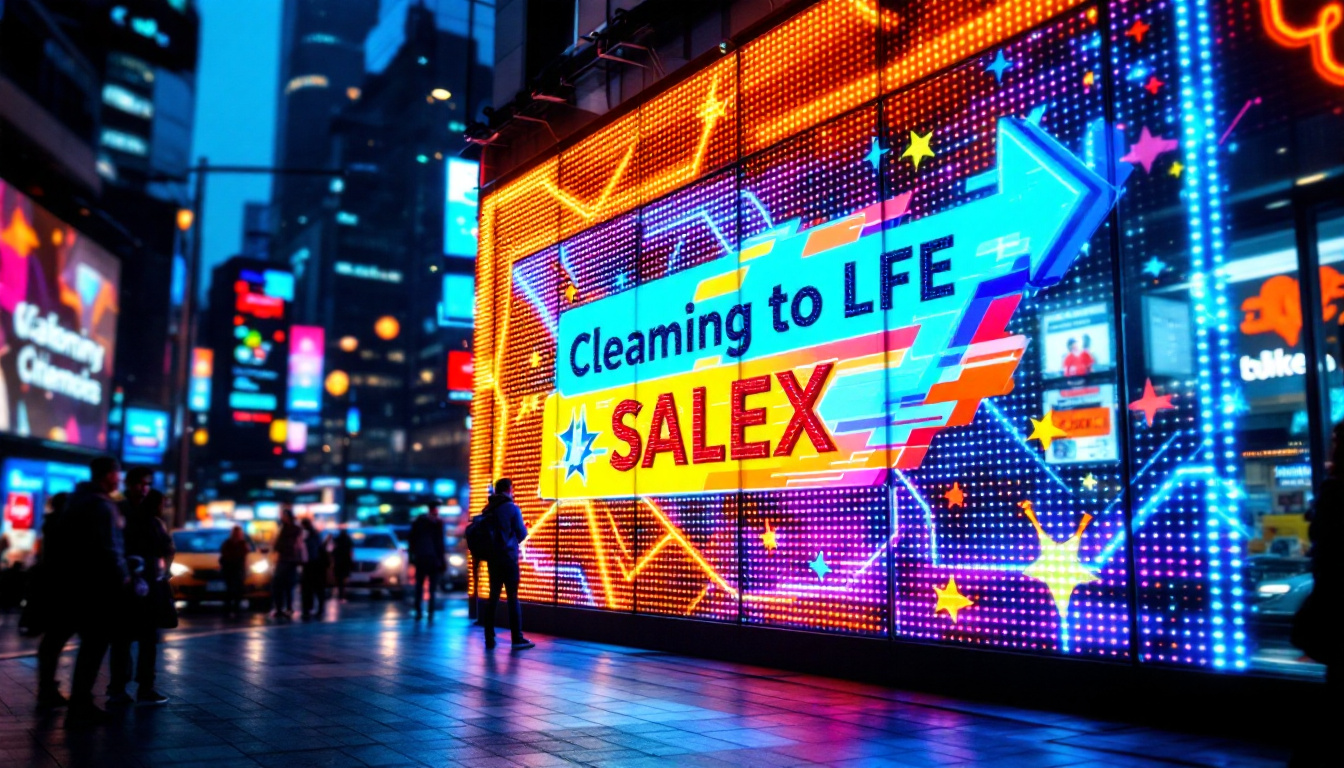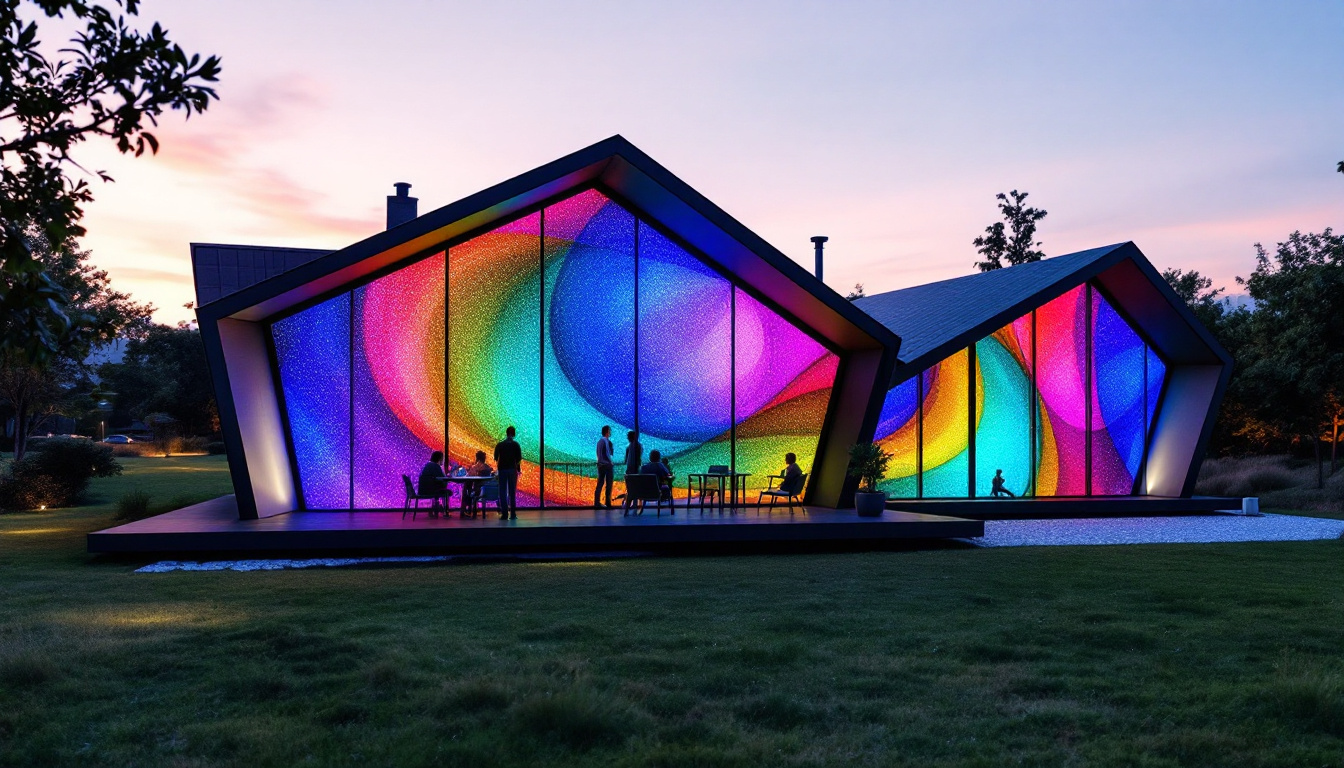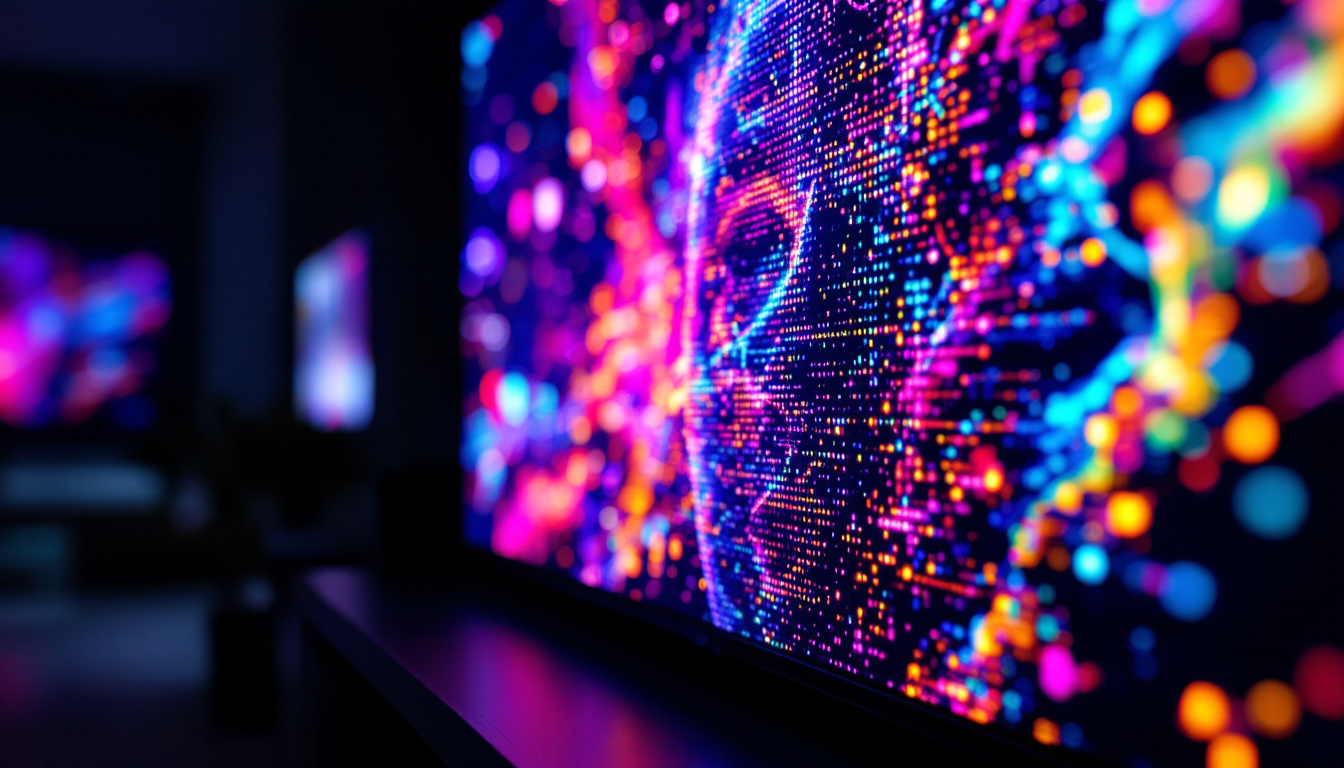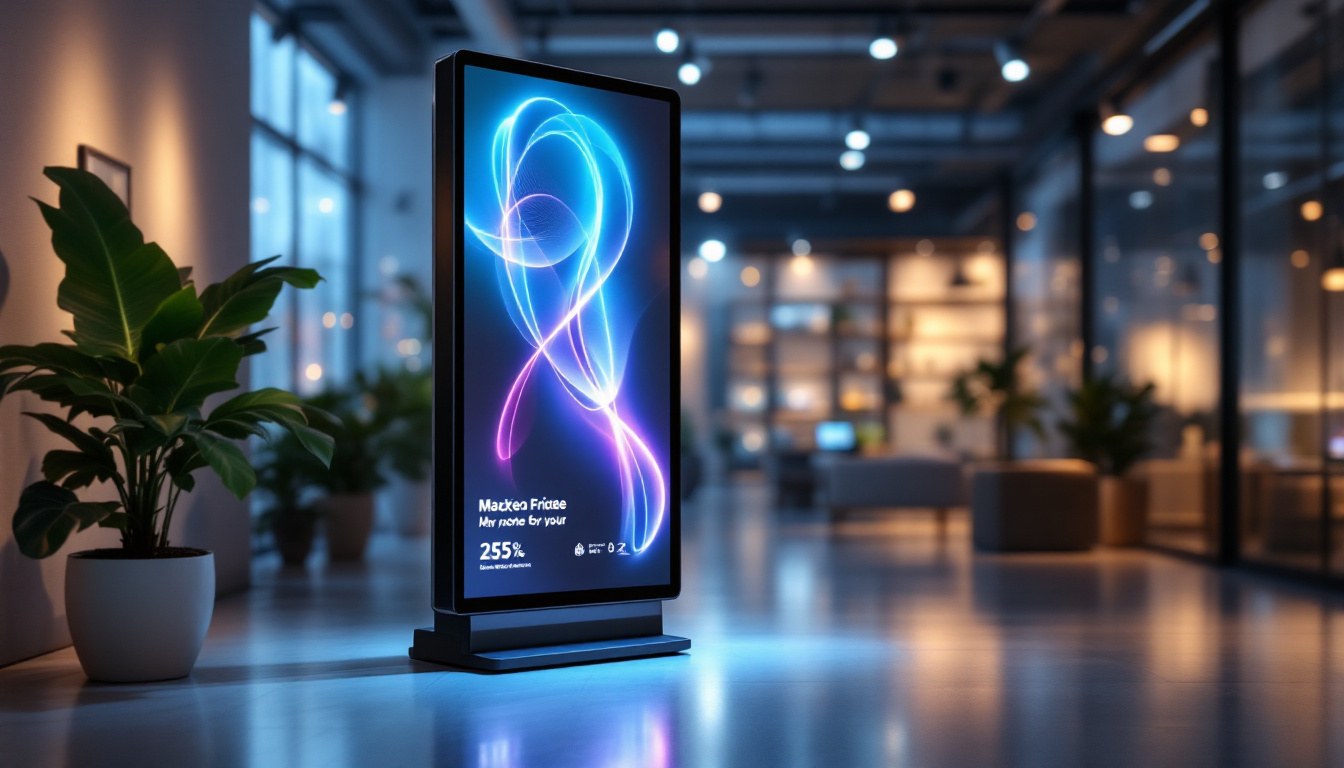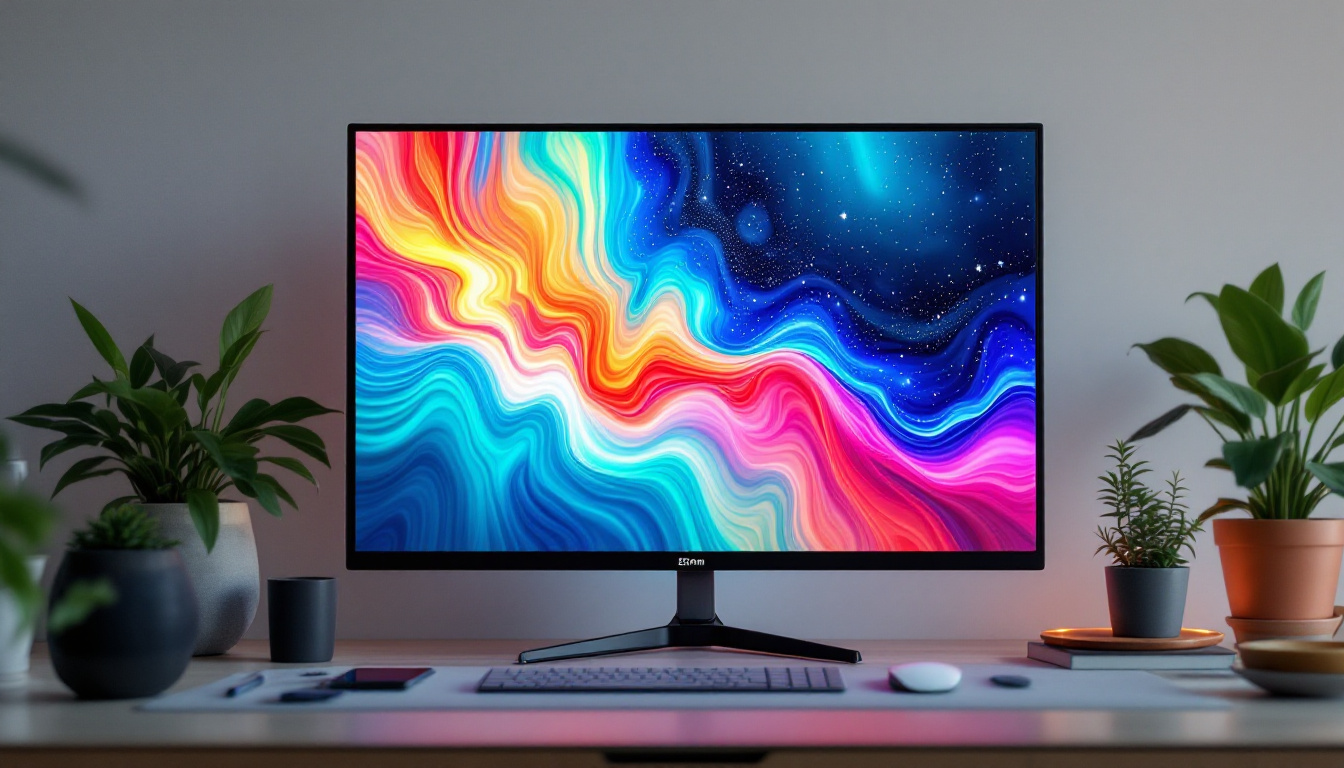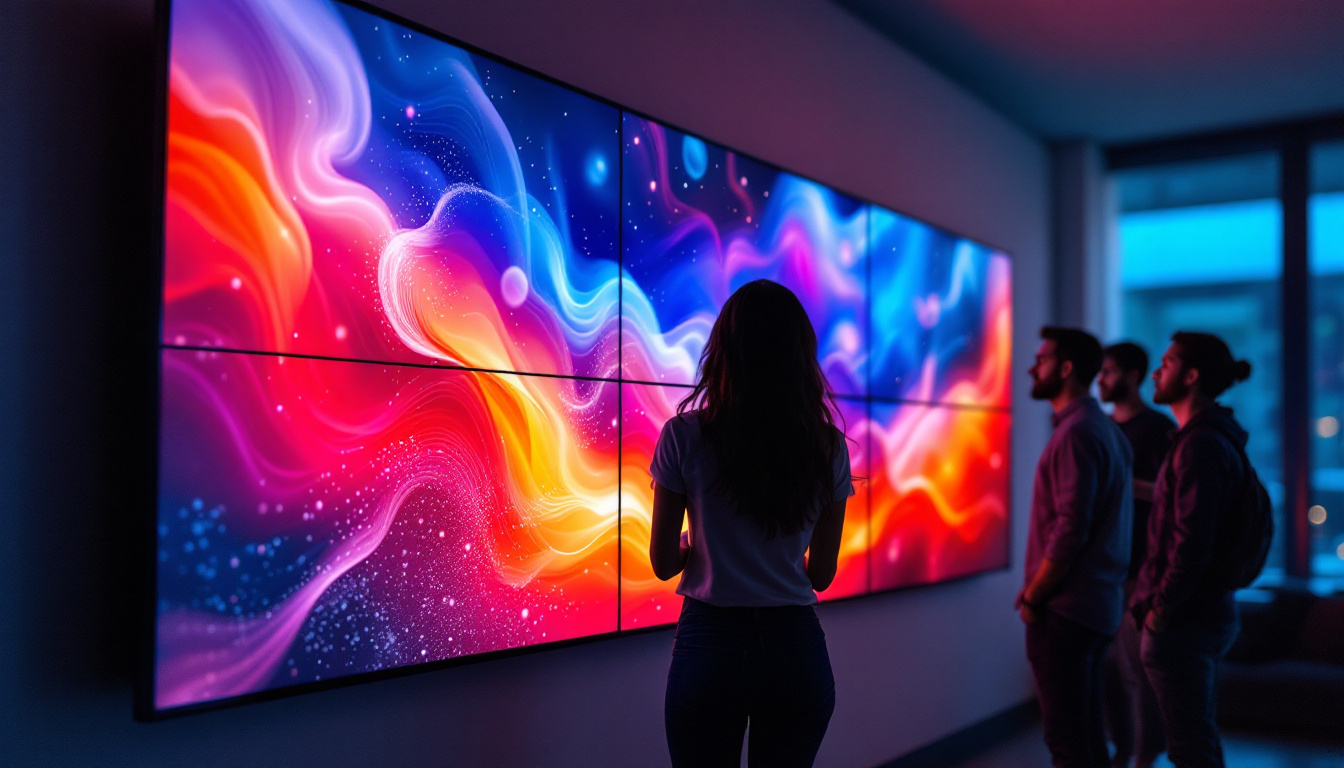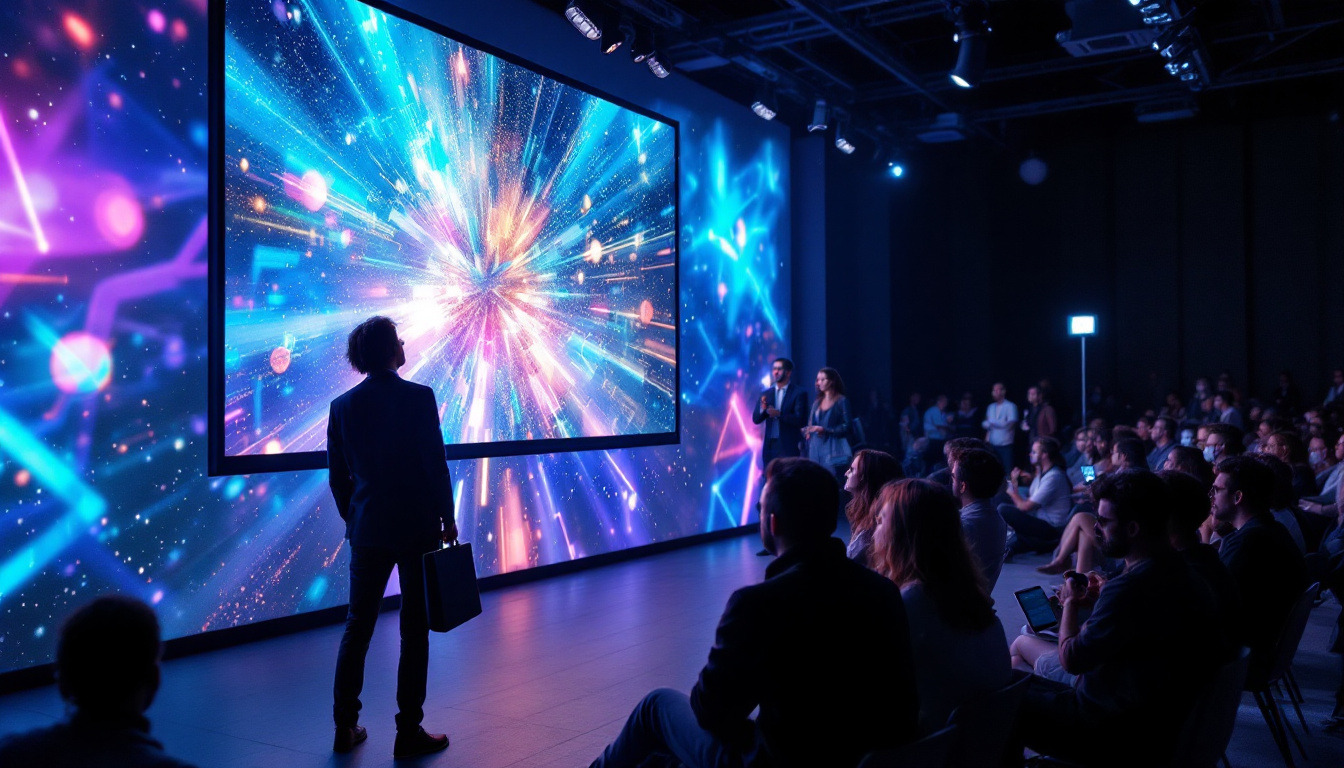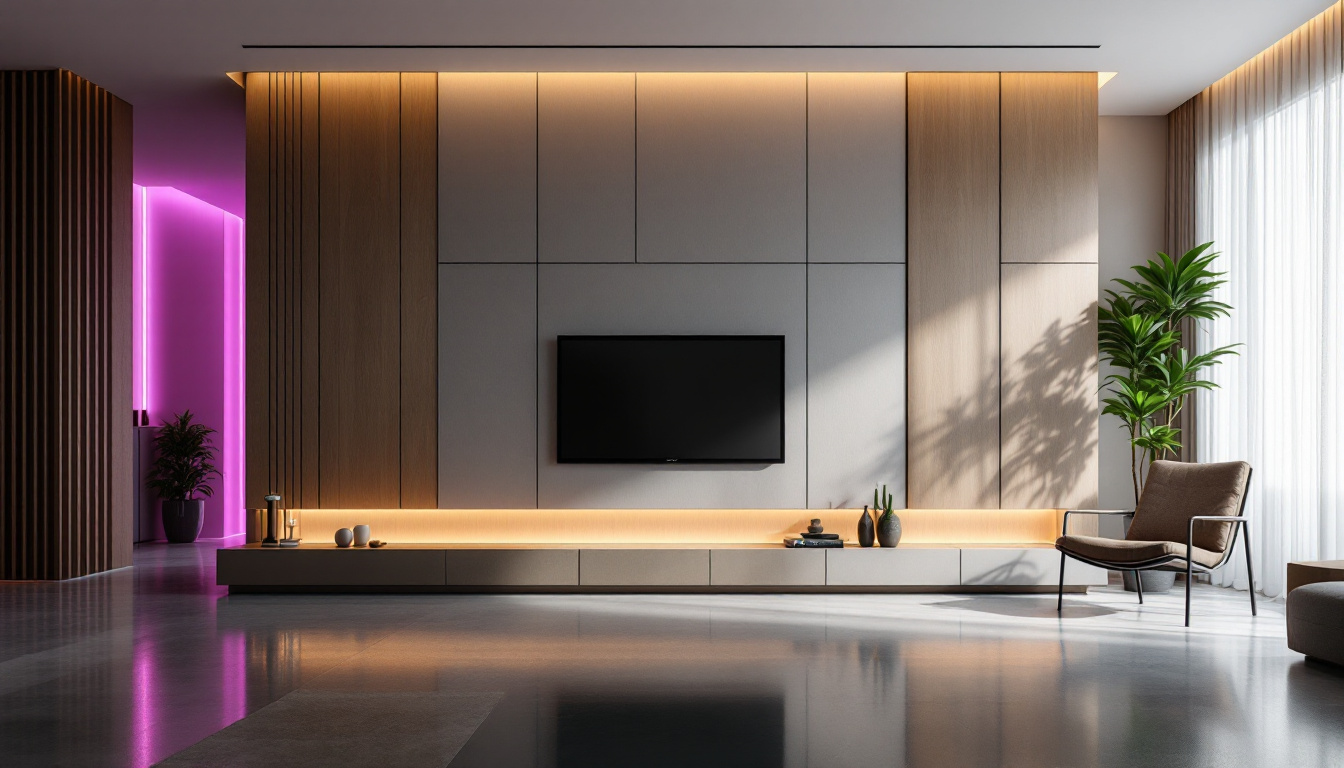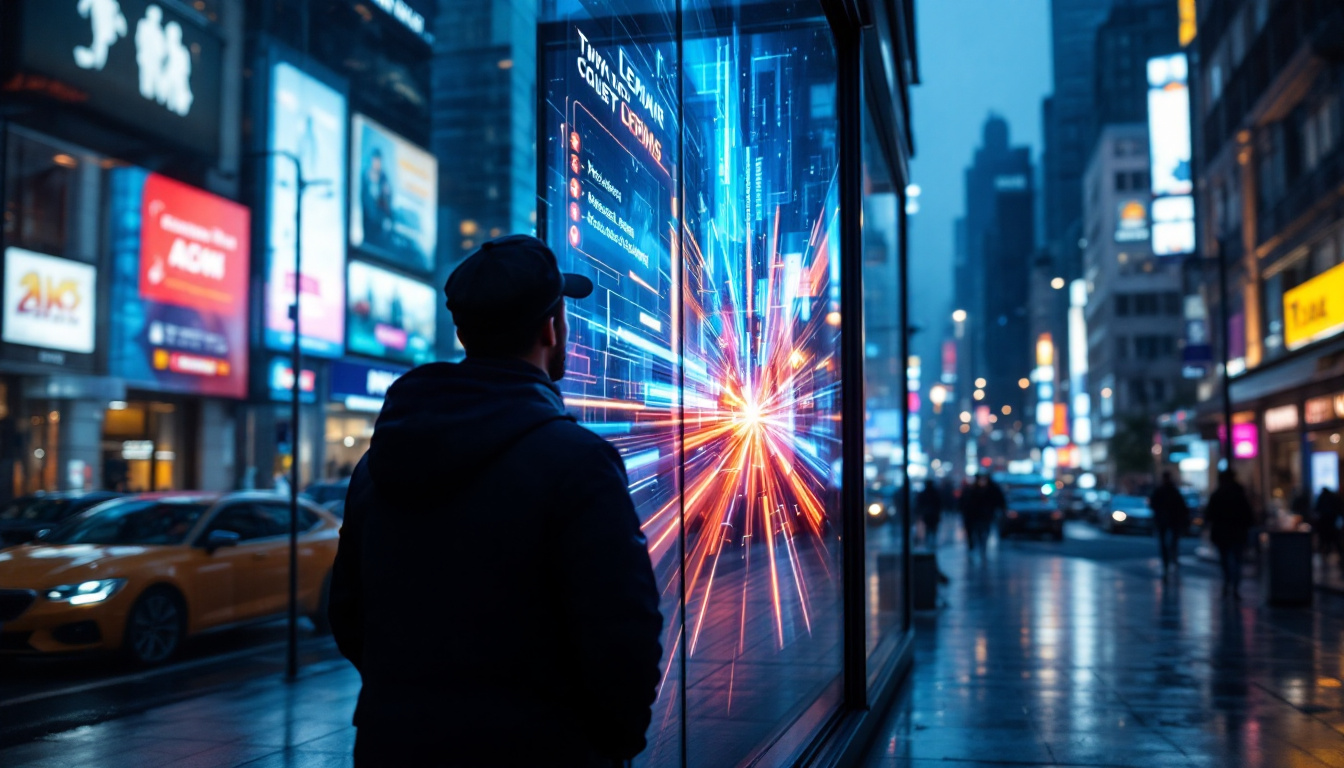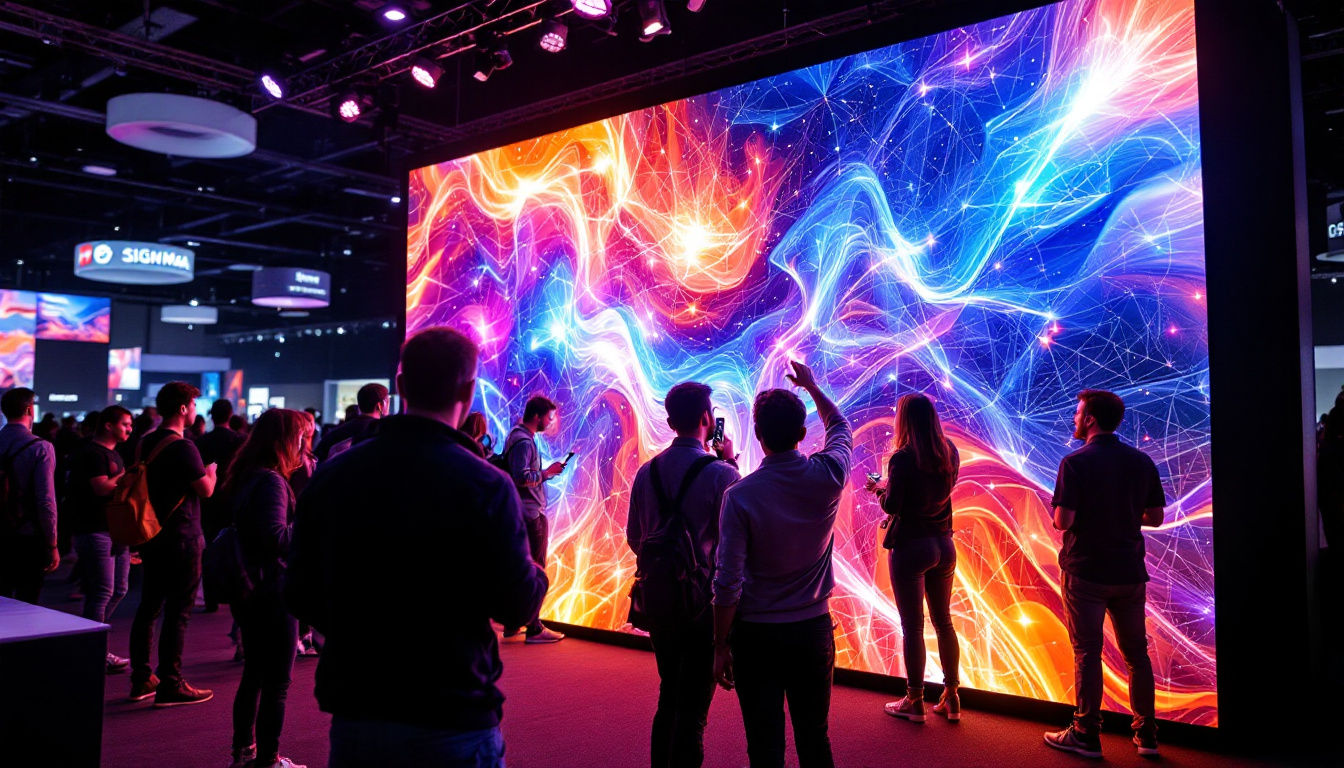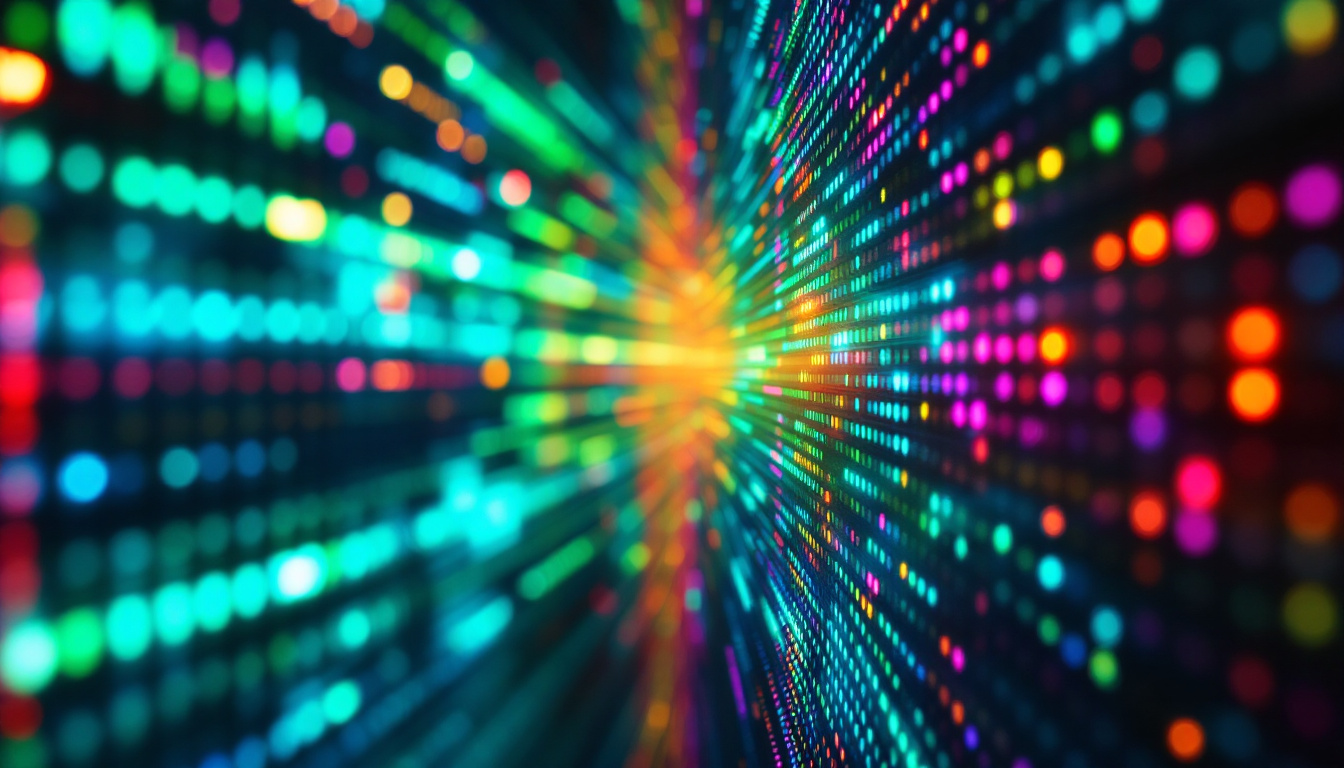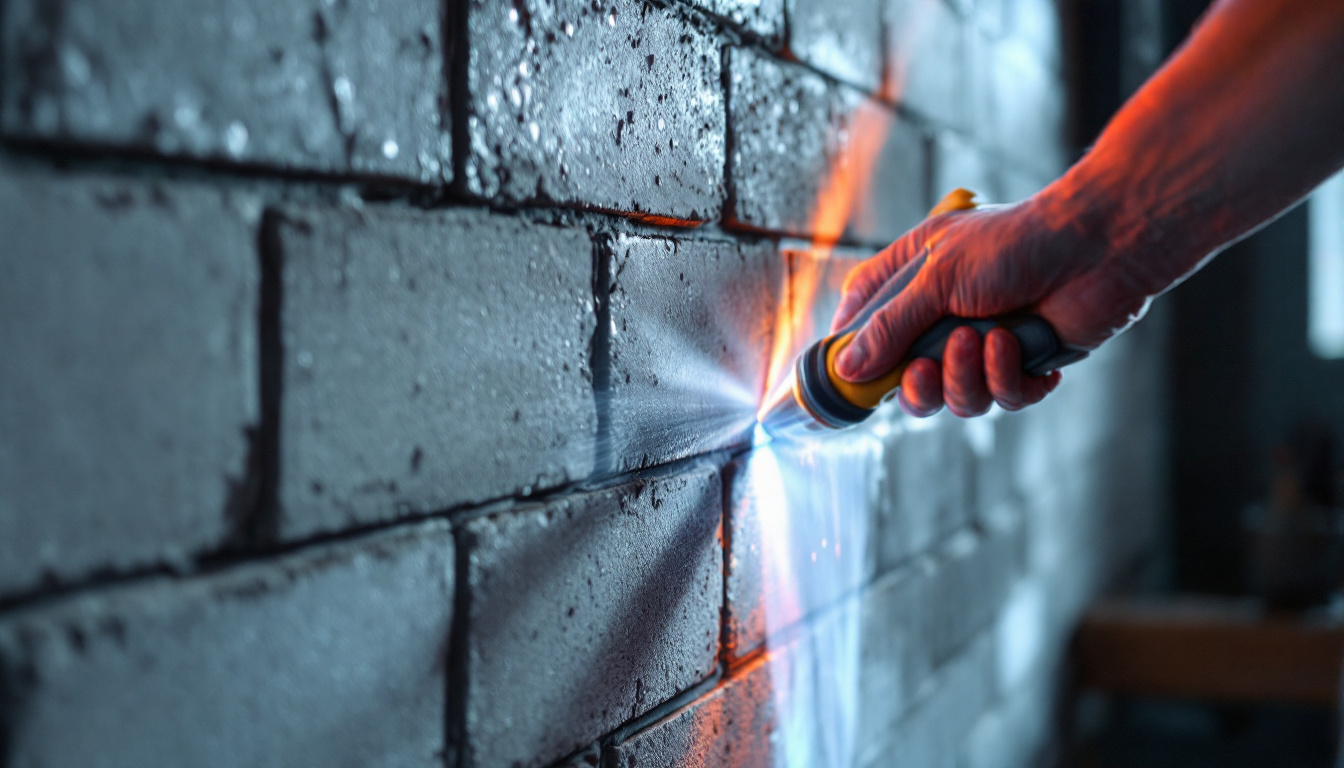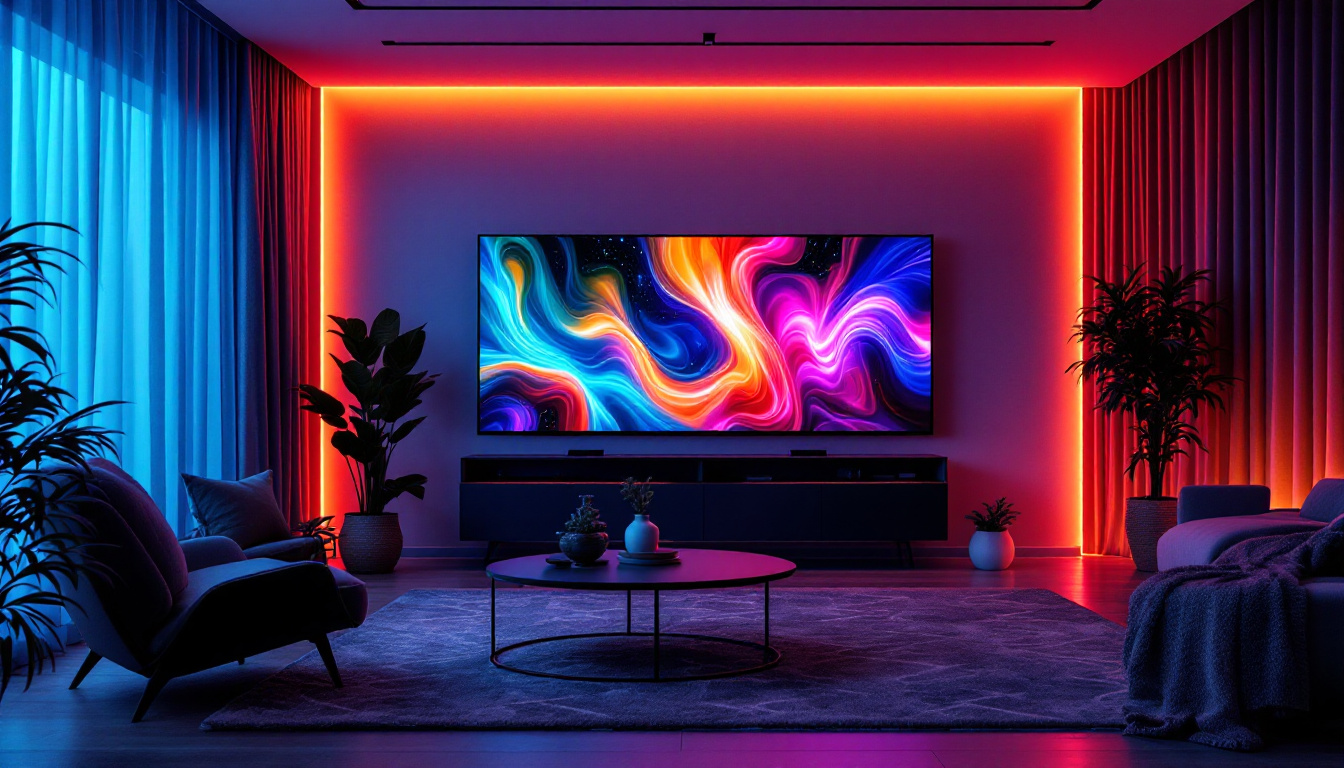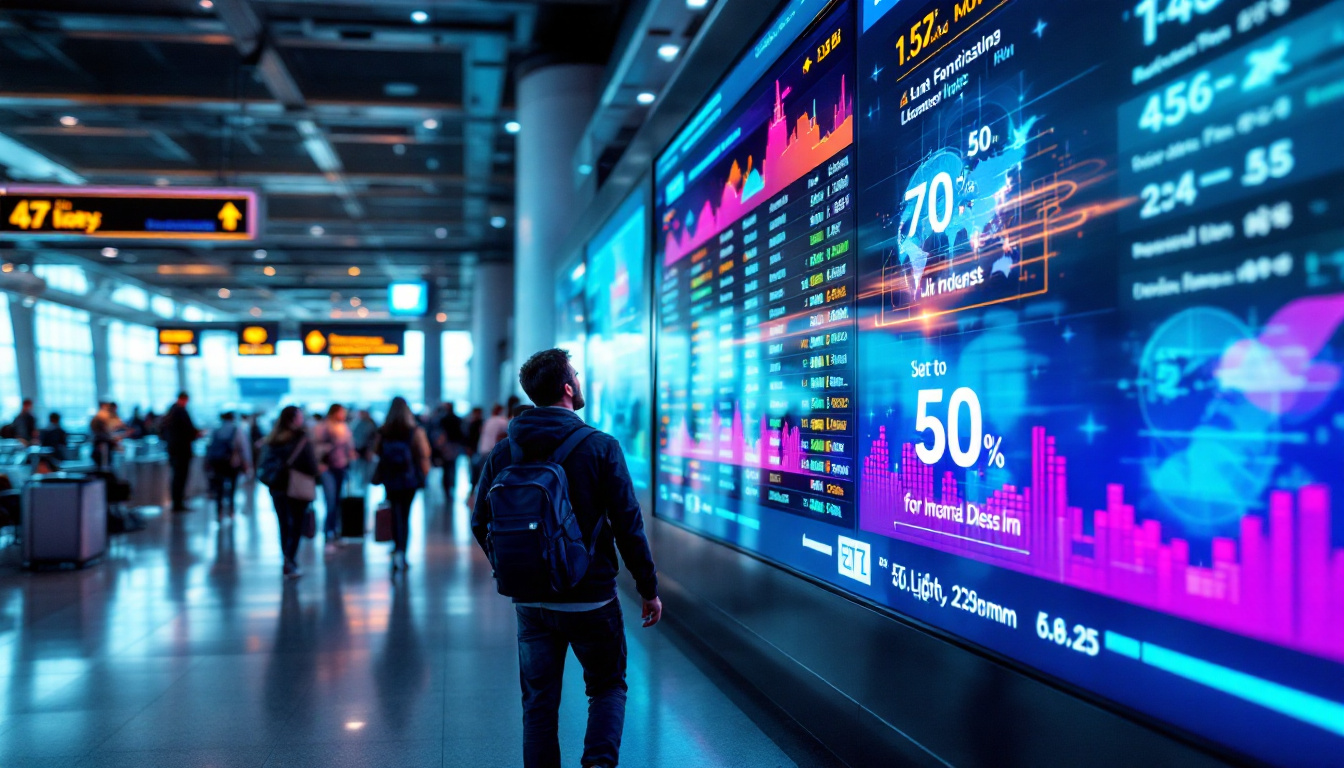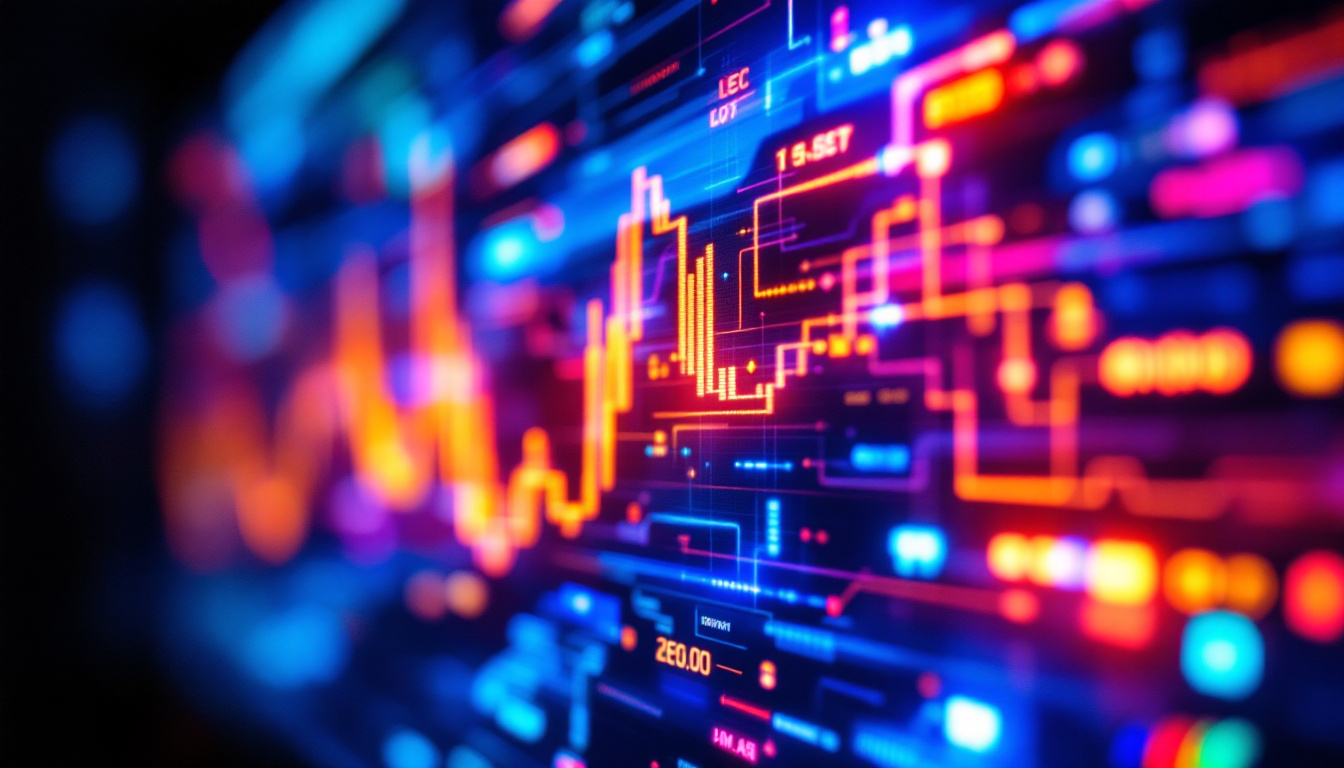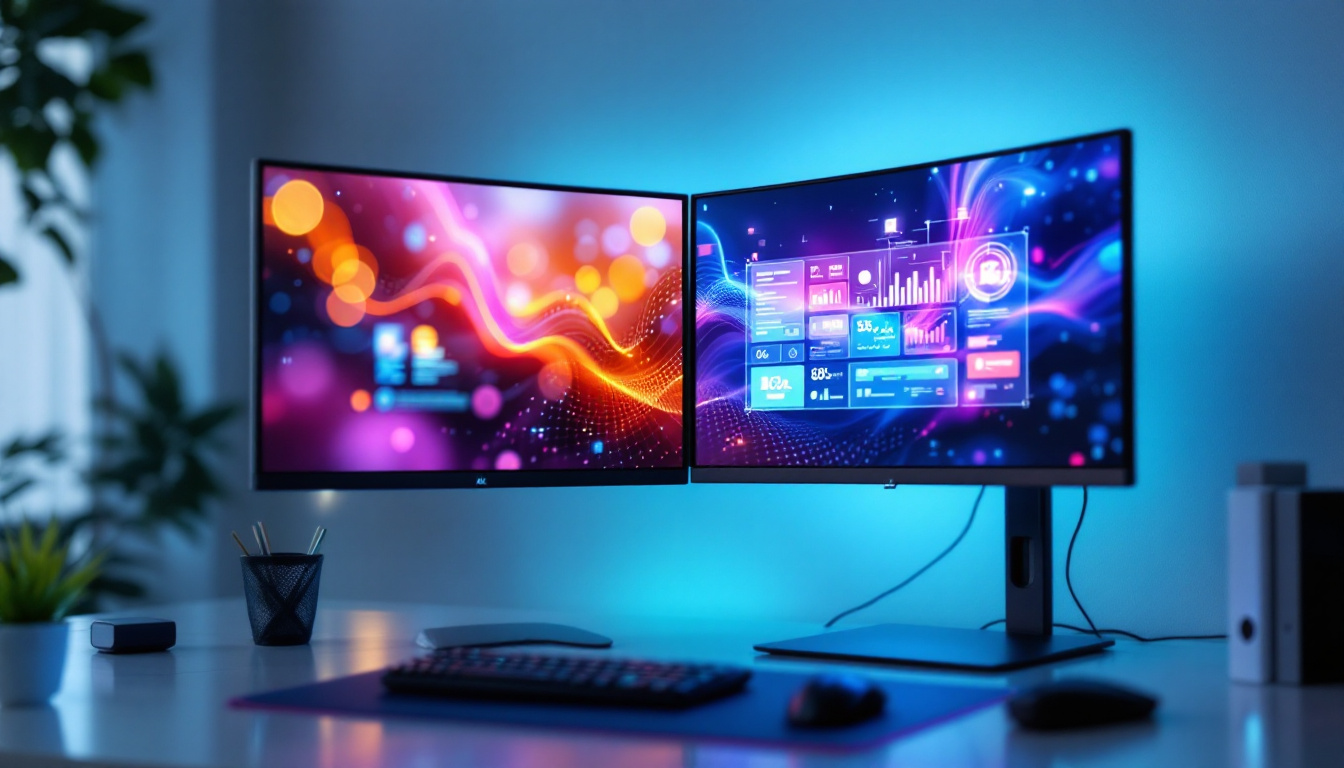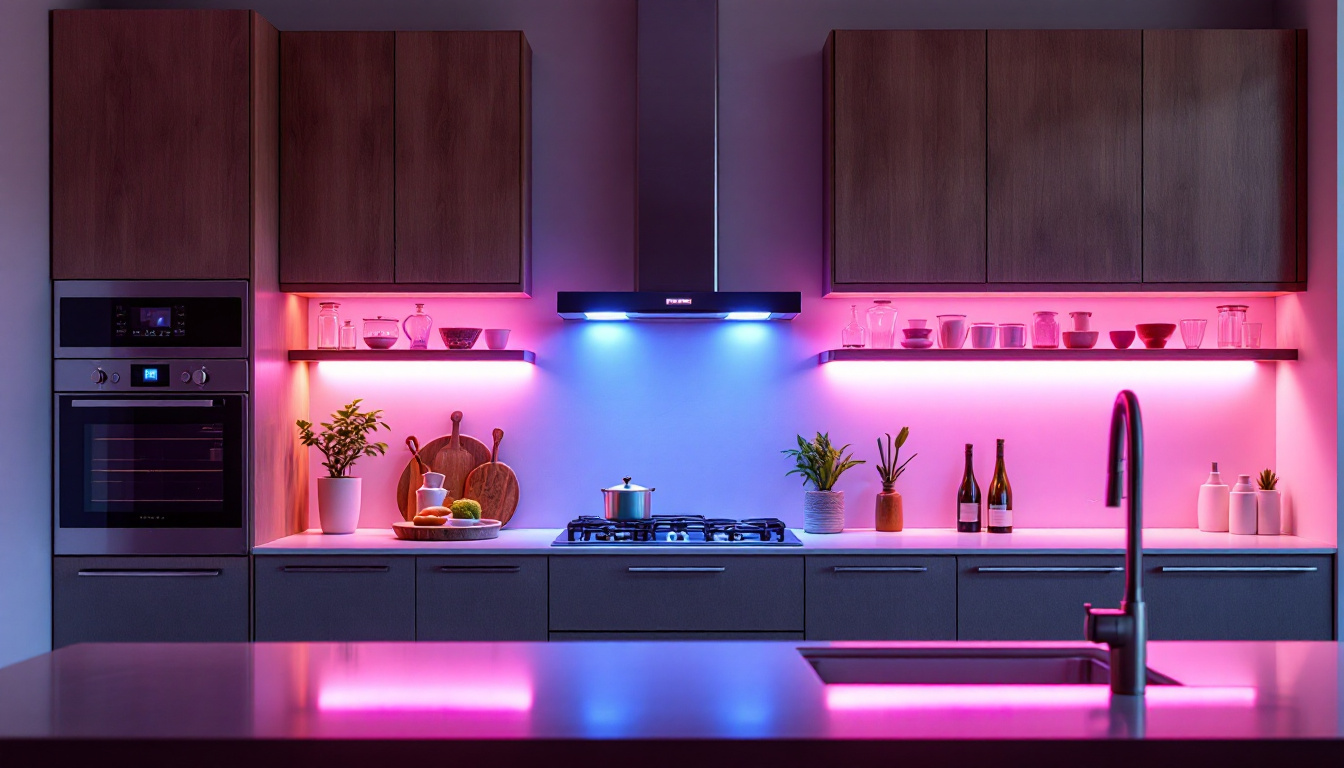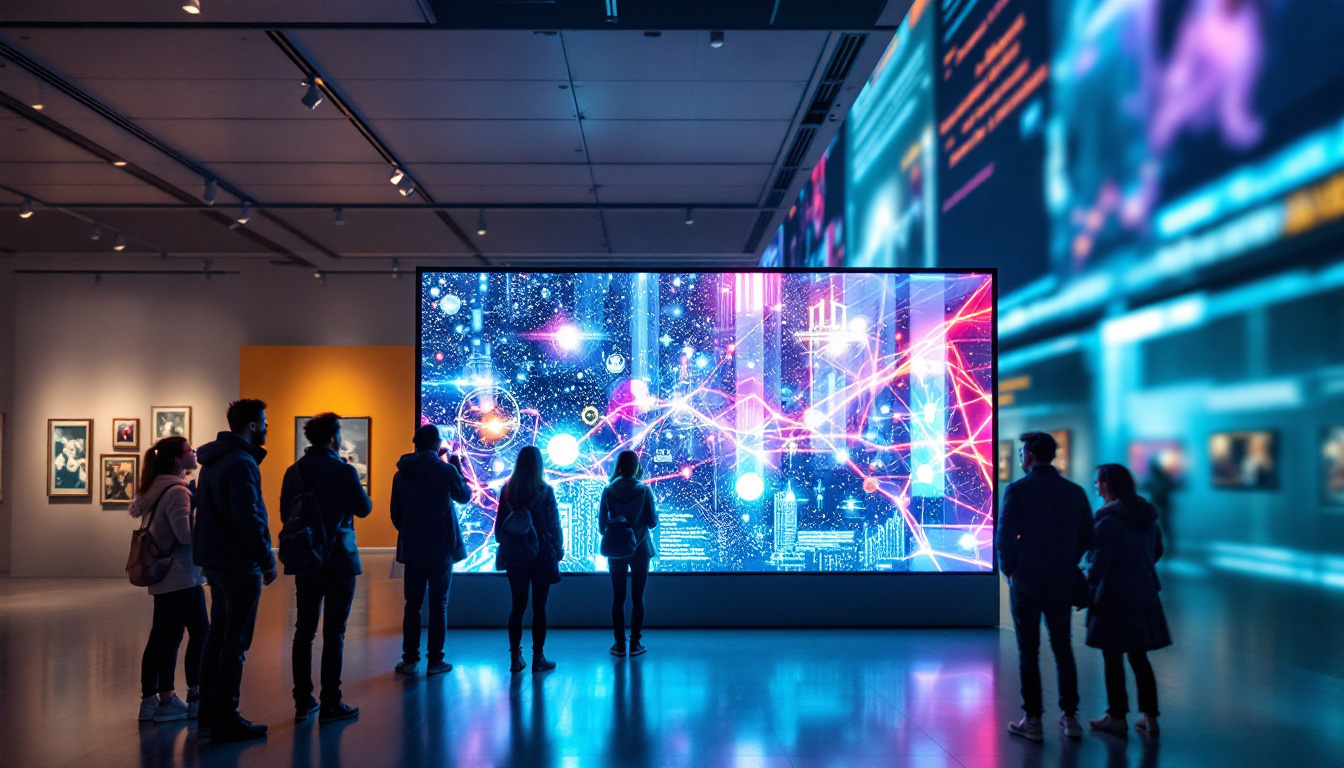In today’s digital age, the demand for high-quality visual displays has surged, leading to the widespread adoption of LED technology. LED displays, particularly large-format screens, have become ubiquitous in various settings, from concert venues to corporate boardrooms. This article delves into the intricacies of LED displays, exploring their technology, applications, and advantages.
Understanding LED Technology
LED, or Light Emitting Diode, is a semiconductor device that emits light when an electric current passes through it. The technology has evolved significantly since its inception, enabling the creation of vibrant and energy-efficient displays. Unlike traditional LCD screens, which rely on backlighting, LED displays use individual light-emitting diodes to produce images directly. This fundamental difference contributes to the superior performance of LED screens, allowing for thinner designs and greater flexibility in various applications.
Types of LED Displays
LED displays can be categorized into several types, each designed for specific applications. The most common types include:
- Direct View LED (DVLED): These displays consist of individual LED modules that are assembled to form a larger screen. They are known for their high brightness and excellent color accuracy, making them ideal for outdoor advertising and large events. Their modular nature also allows for easy repairs and upgrades, enhancing their longevity and cost-effectiveness.
- LED Backlit LCD: This type of display uses LED backlighting to enhance the brightness and contrast of traditional LCD screens. It is commonly found in televisions and computer monitors. The use of LED backlighting not only improves energy efficiency but also allows for local dimming, resulting in deeper blacks and a more dynamic range of colors.
- Organic LED (OLED): OLED displays utilize organic compounds that emit light when an electric current is applied. They are renowned for their deep blacks and wide viewing angles, making them popular in high-end televisions. The flexibility of OLED technology also paves the way for innovative designs, including curved and bendable screens that can adapt to various environments.
How LED Displays Work
The operation of an LED display is based on the principles of electroluminescence. When an electric current passes through the semiconductor material in the diode, it emits light. The color of the light depends on the materials used in the diode’s construction. In full-color LED displays, red, green, and blue (RGB) LEDs are combined to create a wide spectrum of colors.
Each pixel in an LED display is made up of multiple diodes, allowing for precise control over brightness and color. This capability enables LED screens to produce stunning visuals with high contrast ratios and vibrant colors, enhancing the viewer’s experience. The rapid response time of LEDs also contributes to smoother motion rendering, making them particularly suitable for fast-paced video content, such as sports and action films.
Furthermore, the energy efficiency of LED technology cannot be overstated. Compared to traditional incandescent bulbs, LEDs consume significantly less power, which not only reduces electricity bills but also minimizes environmental impact. This efficiency is particularly advantageous in large-scale applications, such as billboards and stadium displays, where the cost of operation can be substantial. As the demand for sustainable technology continues to grow, LED displays are increasingly being recognized as a responsible choice for both commercial and residential use.
Applications of LED Displays
LED displays have found applications across various industries due to their versatility and performance. Some of the most common uses include:
Advertising and Marketing
One of the most prominent applications of LED displays is in advertising. Digital billboards and outdoor signage leverage the brightness and clarity of LED technology to capture the attention of passersby. These displays can be updated in real-time, allowing businesses to promote special offers, events, or new products instantly.
Moreover, LED displays can be programmed to showcase dynamic content, such as videos and animations, which can significantly enhance engagement compared to static signage. This adaptability makes LED displays a powerful tool for marketers looking to make a lasting impression.
Events and Entertainment
In the entertainment industry, LED displays play a crucial role in enhancing live events. Concerts, sporting events, and festivals often feature large LED screens that provide audiences with an immersive experience. These displays can broadcast live feeds, visual effects, and promotional content, ensuring that every attendee has a clear view of the action.
Furthermore, the flexibility of LED technology allows for creative stage designs. Curved and modular LED panels can be arranged in various configurations, enabling unique visual presentations that captivate audiences.
Corporate and Educational Settings
LED displays are increasingly being used in corporate environments for presentations, conferences, and training sessions. Their high resolution and brightness ensure that content is visible even in well-lit rooms. Additionally, many businesses utilize LED video walls for internal communications, displaying important information and updates in real-time.
In educational settings, LED displays enhance learning experiences by providing interactive and engaging content. Schools and universities can use these displays for presentations, lectures, and collaborative projects, fostering a more dynamic learning environment.
Advantages of LED Displays
The popularity of LED displays can be attributed to their numerous advantages over traditional display technologies. Some key benefits include:
Energy Efficiency
LED displays are known for their energy efficiency. They consume significantly less power compared to traditional LCD or plasma screens, making them a more sustainable choice. This reduced energy consumption not only lowers operational costs but also minimizes the environmental impact.
Additionally, the longevity of LED technology contributes to its efficiency. LED displays can last up to 100,000 hours or more, reducing the need for frequent replacements and further decreasing waste.
Brightness and Visibility
One of the standout features of LED displays is their exceptional brightness. They can produce vibrant images even in direct sunlight, making them ideal for outdoor applications. This high visibility ensures that content remains clear and engaging, regardless of lighting conditions.
Furthermore, LED displays offer wide viewing angles, allowing audiences to see content from various positions without loss of quality. This characteristic is particularly beneficial in large venues where viewers may be seated at different angles.
Customization and Flexibility
LED displays offer unparalleled customization options. They can be tailored to fit specific dimensions and configurations, making them suitable for a wide range of applications. From giant outdoor billboards to intricate indoor installations, LED technology can adapt to meet diverse needs.
Moreover, the modular nature of LED panels allows for easy upgrades and repairs. If a single module fails, it can be replaced without the need to replace the entire display, ensuring minimal downtime and cost-effectiveness.
Challenges and Considerations
While LED displays offer numerous advantages, there are also challenges and considerations to keep in mind when implementing this technology.
Initial Costs
The initial investment for LED displays can be higher than that of traditional display technologies. This upfront cost may deter some businesses or organizations from making the switch. However, it is essential to consider the long-term savings associated with energy efficiency and reduced maintenance costs.
Additionally, as technology continues to advance, prices for LED displays are gradually decreasing, making them more accessible to a broader range of users.
Maintenance and Calibration
Although LED displays are generally low-maintenance, they still require periodic calibration and servicing to ensure optimal performance. Factors such as environmental conditions and usage patterns can affect the display’s color accuracy and brightness over time.
Regular maintenance can help extend the lifespan of the display and ensure that it continues to deliver high-quality visuals. Organizations should factor in these maintenance requirements when planning their LED display investments.
Content Management
Managing content on LED displays can be complex, especially for large installations. Organizations must have a robust content management system in place to schedule and update content efficiently. This may require training staff or hiring specialized personnel to ensure that the display is utilized effectively.
Moreover, creating engaging content that captures the audience’s attention is crucial. Organizations should invest in high-quality visuals and consider hiring professionals to design content that aligns with their branding and messaging.
The Future of LED Displays
As technology continues to evolve, the future of LED displays looks promising. Innovations in materials, design, and functionality are paving the way for even more advanced displays.
Advancements in Technology
Emerging technologies such as microLED and miniLED are set to revolutionize the LED display market. These advancements promise higher resolutions, improved color accuracy, and even greater energy efficiency. MicroLED technology, in particular, offers the potential for ultra-thin displays that can be seamlessly integrated into various environments.
Additionally, advancements in artificial intelligence and machine learning are enhancing content management systems, allowing for more dynamic and personalized content delivery. This will enable organizations to engage their audiences more effectively and create tailored experiences.
Integration with Smart Technologies
As smart technology becomes increasingly prevalent, LED displays are likely to integrate more seamlessly with other digital systems. This integration could lead to enhanced interactivity, allowing users to engage with displays in real-time through mobile devices or other smart technologies.
For example, interactive LED displays could enable viewers to access additional information, participate in polls, or engage with content in innovative ways, transforming the way audiences interact with visual media.
Conclusion
LED displays have transformed the way information is communicated and experienced across various industries. Their superior brightness, energy efficiency, and versatility make them an ideal choice for a wide range of applications, from advertising to education. While there are challenges to consider, the benefits of LED technology far outweigh the drawbacks.
As advancements continue to shape the future of LED displays, organizations that embrace this technology will be well-positioned to engage their audiences and deliver impactful visual experiences. Whether for a concert, corporate event, or advertising campaign, LED displays are set to play a pivotal role in the evolution of visual communication.
Discover Cutting-Edge LED Displays with LumenMatrix
Ready to elevate your visual communication with the latest in LED display technology? Look no further than LumenMatrix, a pioneer in crafting LED display modules that not only enhance brand visibility but also create immersive visual experiences. From versatile Indoor and Outdoor LED Wall Displays to innovative solutions like Vehicle LED Displays, LED Posters, and even Custom LED Displays, LumenMatrix offers a comprehensive range of products designed to captivate and engage your audience. Embrace the future of digital signage with our All-in-One and Transparent LED Displays, and see how our commitment to revolutionizing visual communication can empower your business. Check out LumenMatrix LED Display Solutions today and transform the way you share your message.

